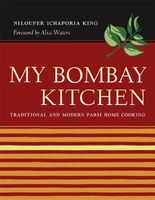Advertisement
Tamarind
Amli
Published 2007

Tamarind comes from the seedpod of a leguminous tree (Tamarindus indica) native to Africa but has been used so long in India that the Arabs called it “date of India,” tamar-i-hind. Now found and used in both Old World and New World tropics, tamarind is indispensable to the parsi kitchen as a souring agent in curries and fresh chutneys. The pulp surrounding the seeds is sold worldwide in compressed blocks or in gunnysacks at Bombay’s traditional grocers. Compressed tamarind pulp needs to be soaked and strained before use. Markets in the United States often sell whole brittle-shelled tamarind seedpods. The strained pulp of these is paler and fresher-tasting than what you get from darker, riper, compressed block tamarind. I sometimes use it in dressings for green salads.


